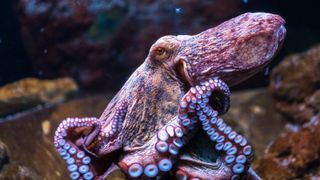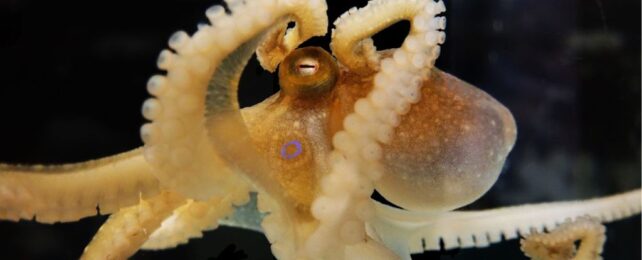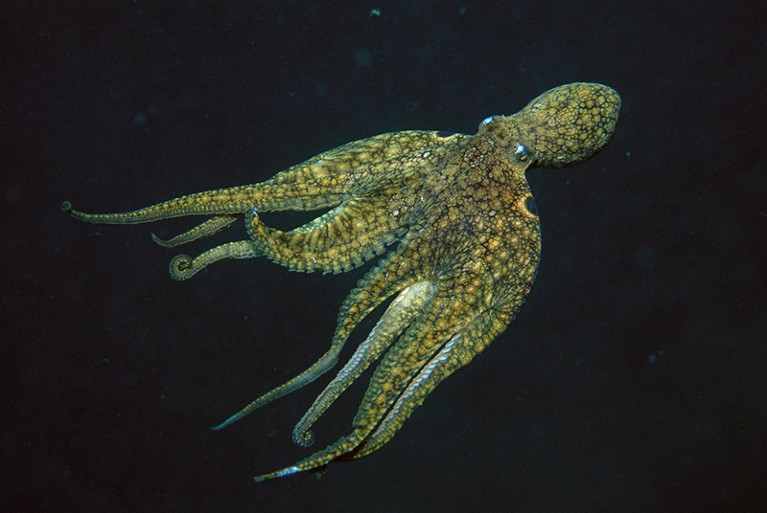Kevin Keane - BBC Scotland's environment correspondent
Wed, April 17, 2024

Scotland was aiming to cut emissions by 75% by the end of the decade [PA Media
The Scottish government is to ditch its flagship target of reducing greenhouse gas emissions by 75% by 2030.
The final goal of reaching "net-zero" by 2045 will remain, but BBC Scotland News understands the government's annual climate targets could also go.
Ministers have missed eight of the last 12 annual targets and have been told that reaching the 75% milestone by the end of the decade is unachievable.
A statement is expected at Holyrood on Thursday afternoon.
The Climate Change Committee (CCC) - which provides independent advice to ministers - warned back in 2022 that Scotland had lost its lead over the rest of the UK in tackling the issue.
Last year ministers failed to publish a plan it promised - required under the act - detailing how they were going to meet the targets.
Scottish government climate targets unachievable, says watchdog
Scotland's climate 'changing faster than expected'
Scotland loses climate change lead, advisers warn
Then in March of this year the CCC said for the first time that the 2030 target was unreachable.
Former first minister Nicola Sturgeon saw her SNP administration as world leaders on climate change when the targets were introduced in 2019, often asserting that Scotland had the "most stretching targets in the world."
Hers was the first government in the world to declare a climate emergency and Glasgow hosted the COP26 climate summit in 2021, yet environmentalists believe the emergency response never came.
So scrapping the targets will be seen as an embarrassing retreat for the SNP and the Scottish Greens, their partners in the Scottish government.
Scotland's emissions reduction target for 2030 was tougher than for the UK as a whole, which was for a reduction of 68% by the same date.
Where did the targets come from?
There was a febrile atmosphere around back in 2019 when the Scottish Parliament passed its landmark legislation to speed up the rate of decarbonisation
It was the height of the school climate strikes and just a few days earlier thousands had taken to the streets in support of Greta Thunberg's calls for more action.

Nicola Sturgeon - pictured here with Greta Thunberg and climate activist Vanessa Nakate - portrayed her government as being climate leaders at COP26 in Glasgow
At Holyrood, parties were trying to outbid each other on how quickly the country could go, eventually settling on a pace far beyond what experts had planned for.
The Scottish Greens - who are now in government with the SNP - proposed aiming to cut emissions by a whopping 80% compared with the baseline year of 1990.
But parliament settled on 75% - still 5% more than recommended - and the Climate Change Bill was agreed by all parties except the Greens, who abstained.
One former minister told me there was a "lack of realism" at the time.
What went wrong?
The new legislation required ministers to set annual targets for reducing emissions.
In a sense it was a hostage to fortune with the yearly totals heavily influenced by the winter weather which determines how much gas we use to heat up our homes.
But the trend was clear as eight out of 12 of the targets were missed.

Protestors marched to a rally in Holyrood Park in Edinburgh in the days before the climate targets were set [Getty Images]
With the closure of Scotland's last coal-fired power station at Longannet in 2016, politicians conceded that the low-hanging fruit had all been picked and any future progress would require big changes to how we live our lives.
But the Greens believe the current system has fundamentally failed with too much emphasis placed on targets rather than policies.
That might be how the Greens try to convince their voters that scrapping the targets will be the right decision.
Scottish Greens climate spokesman Mark Ruskell said the party was "absolutely determined to accelerate the urgent and substantial action needed to tackle the climate crisis as laid out by the CCC recently, and fully expect the Scottish government to respond to that challenge".
Have emissions been falling?
The short answer is yes, but not by enough.
By 2021 greenhouse gas emissions had fallen by 49.2% compared with the baseline level in 1990.
That's a massive half of our planet warming gases which have already been eradicated from the economy.
But the law required a 51.1% fall by that date to keep on track.
Some industries have seen huge changes that have driven down emissions like the energy and waste sectors.
Others have remained stubbornly unmoved such as transport and agriculture.
What would scrapping the targets mean?
It is likely the Scottish government would replicate the system of "carbon budgets" used by both the UK and Welsh governments.
Rather than annual targets, ministers would be told how much greenhouse gas could "safely" be emitted during a parliamentary term and have to come up with a plan to achieve that.
It would mean an end to the legal requirement of successive environment secretaries having to explain to parliament why the targets have been missed.
There is an argument that the annual targets are a distraction because emissions are influenced by many factors including the weather and that the overall trend is more important.
Having been the first government in the world to declare a climate emergency, scrapping targets will be an embarrassing retreat.
What will the Scottish government do now?
Ministers have a conundrum; they are legally required to produce a "climate change plan" which details how they will achieve their targets.
That plan is now long delayed and the Climate Change Committee confirmed last month that the flagship 2030 target was now beyond reach.
So, it is just not possible to produce that plan any more.
An option would be to set new targets within the existing legislation and then produce a plan.
But one official described those annual targets as nothing more meaningful than a straight line on a graph.
So abolishing them altogether - and perhaps setting a lower 2030 target - seems the most likely course of action available.
Yousaf ‘will ditch Sturgeon’s pledge to cut Scotland’s greenhouse gases’
Simon Johnson
Wed, April 17, 2024

Humza Yousaf and his Government were accused of over-promising and under-delivering - Michael McGurk
Humza Yousaf will dump Nicola Sturgeon’s flagship pledge of cutting Scotland’s greenhouse gases by 75 per cent by the end of the decade, it has been reported.
Ms Sturgeon said her SNP administration was a global leader on climate change when the target was introduced in 2019, calling it the “most stretching” in the world.
But in an embarrassing climbdown, Mr Yousaf’s SNP-Green government is expected to use a ministerial statement at Holyrood on Thursday to confirm that the 2030 target has been ditched. Harmful emissions were supposed to have been cut by three-quarters compared to 1990 levels.
BBC Scotland reported that a final goal of Scotland being net zero by 2045 – five years ahead of the rest of the UK – would remain, but that annual climate targets covering emissions from sectors such as transport and heating could also be scrapped.
‘Succession of missed targets’
The expected announcement comes after the UK’s official climate watchdog said last month that the current rate of progress in cutting greenhouse gases would have to be increased by a factor of nine for the 2030 target to be met.
In a damning report, the Climate Change Committee said this level of increase was “beyond what is credible” and was double the most ambitious scenario it had modelled if stringent measures were introduced.
The assessment found that Scotland’s annual target for cutting emissions was missed again in 2021 – for the eighth time in the last 12 years – after greenhouse gas levels rose by 2.4 per cent as the economy rebounded from the Covid pandemic.
The Tories said ditching the 2030 target would be an “abject humiliation” for the SNP and its Green coalition partners.
Douglas Lumsden, the Scottish Tories’ shadow net zero secretary, said: “For all the boasting about their supposed environmental credentials, the reality is a succession of missed targets – and being forced to throw in the towel on this flagship pledge represents the biggest failure of the lot.
“This climbdown is not a surprise, given the damning report from the Climate Change Committee, but it is symptomatic of a nationalist coalition that routinely over-promises and under-delivers.”
‘Scotland deserves better’
Michael Shanks, a Scottish Labour MP, wrote on X, formerly Twitter: “Defending the profits of oil and gas giants, now binning their key climate target. Clearly the Greens are having a strong influence in government. Scotland deserves better than this lot.”
The Scottish Government refused to confirm or deny whether the 2030 report would be scrapped, saying the details would be announced in the statement by Mairi McAllan, the SNP’s Net Zero Secretary.
The Climate Change Committee is an independent statutory body that advises the UK Government and devolved administrations on their emissions targets.
Just over 6,000 heat pumps were installed in Scottish homes last year, it said in last month’s report, but this “needs to increase to more than 80,000 per year by the end of the decade”.
The committee also noted that publication of the Scottish Government’s new draft climate change plan, which was supposed to have happened late last year, had been delayed. This meant there was “no comprehensive delivery strategy for meeting future emissions targets and actions continue to fall far short of what is legally required”.



